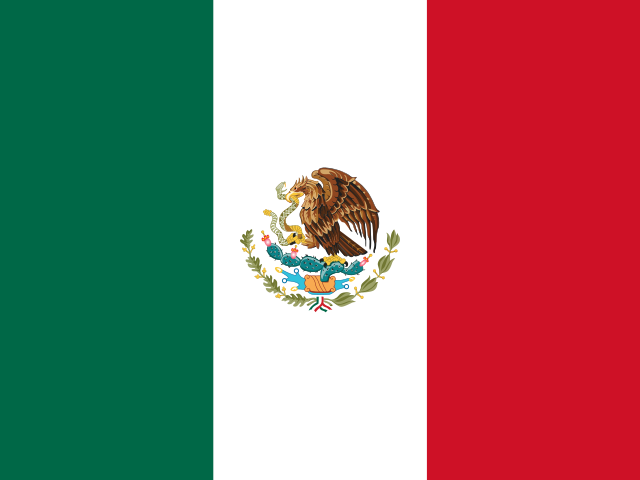
Mexico
Mexican news media still face daily attacks from a populist president. Innovation and mergers among big players have brought significant new challenges in the market, while competition from US-based media increases choices for consumers.
The relationship between the media and the president is not getting easier. Daily verbal attacks on the news industry from President Andres Manuel López Obrador (AMLO) have increased in the past year as he has continued to use his morning addresses, known as the mañaneras, to pursue his agenda. Notable journalists including Carmen Aristegui, a host on CNN en español, war correspondent and radio host Carlos Loret de Mola, and commentator Victor Trujillo have all been targeted by the president, as have numerous domestic and international outlets. A letter signed by 180 Mexican journalists in December 2022 demanded an end to the harassment. Three journalists were murdered in Mexico in the first three months of the year.
Human rights organisation Article 19 says that the Mexican government has developed a ‘strategy of disinformation’ while claiming to have created greater transparency and accountability. This has happened, it says, while legal access to public sources of information has, in effect, been curtailed. It also claims that about a quarter (26.5%) of the public information provided by government authorities was false.1
Legal challenges from journalists have been numerous, including one from Aristegui and one from political scientist and journalist Denise Dresser, who claimed her freedom of expression and right to reply had been violated.
Meanwhile Google’s Mexican division is appealing against a decision which saw it ordered to pay US$250m in punitive damages following the publication of an article on its Blogger platform which made defamatory allegations against a lawyer, Ulrich Richter Morales. He said that Google should not have allowed the offending content to remain accessible.
Despite fears of recession, the Mexican economy has recovered well after COVID-19. Significant growth is forecast for the telecommunications sector, and there is optimism too for entertainment and media,2 despite announcements of newsroom job cuts.
Football news site SoyFutbol (part of the Debate Group) and news site La Silla Rota (part of the El Universal newspaper group, and historically the most significant player in the Mexican news market) have seen the highest audience growth this year according to figures from El Economista and Comscore.3
Commercial television is still dominant in Mexico, but is increasingly threatened by internet-based streaming platforms. All the global players are active in Mexico along with home-grown ventures such as Claro Video, part of Carlos Slim’s América Móvil, which also owns digital news brand UnoTV. Uno is one of three digital-native outlets with the highest traffic, along with Medio Tiempo and SDP News from parent company Grupo Televisa, the biggest player in commercial TV.
The merger of Grupo Televisa with US-based Spanish-language network Univision, completed this year, has led to the creation of TelevisaUnivision and the development of another streaming platform, ViX, which offers movies, soap operas, and sport, alongside news. It says it is now the largest Spanish-language streaming service in the world and has more than 25 million monthly active users on its ad-funded tier alone.
Internet penetration looks set to increase further, as the start of the development of a 5G network begins, adding to well-established fixed and mobile broadband services. This should help access for regions where it is difficult to install fixed broadband, such as rural areas of southern Mexico.
Digital-native operator LatinUS, which launched in 2020 with Carlos Loret de Mola, one of the president’s favourite targets, as its frontman, runs investigations into corruption and organised crime. Though it was created to appeal to Latin American audiences within the US, from where it is produced, it has seen success in appealing to a young engaged audience in Mexico and in January this year began broadcasting live. One of the president’s other targets, Victor Trujillo, took a character he plays called Brozo, a green-haired, foul-mouthed clown who rants about the news, onto the LatinUS network.
LatinUS has grown too on TikTok where it has more than 3.4 million followers, including for videos of Brozo. Our data show that TikTok has grown substantially in Mexico this year, and many of the news firms are trying to find ways to engage younger audiences there. The president, as yet, is not joining them.
María Elena Gutiérrez-Rentería
Universidad Panamericana
Changing media
TV and print have become gradually less important over time for our online sample, with social media widely used across age groups. Mexicans are heavy users of social media, with YouTube and TikTok growing fastest for news.
Pay for online news
16%
Trust in news overall
36%
27/46
Trust in news I use
41%
The president's repeated attacks against news companies may have impacted the steady decline in trust in the news over the last few years from 50% in 2019 to 36% today. Most of the top news brands have seen further declines in their individual trust scores this year, with CNN outperforming local brands.
RSF World Press Freedom Index
128/180
Score 47.98
Measure of press freedom from NGO Reporters Without Borders based on expert assessment. More at rsf.org
Share news via social, messaging or email
48%
Footnotes
1 Article 19, (Des) información oficial y comunicación social, 14 Mar. 2023.
3 I. Marchant, ‘Sólo 4 medios nativos registran crecimiento de audiencia en 2022’, Comscore, 8 July 2022.

